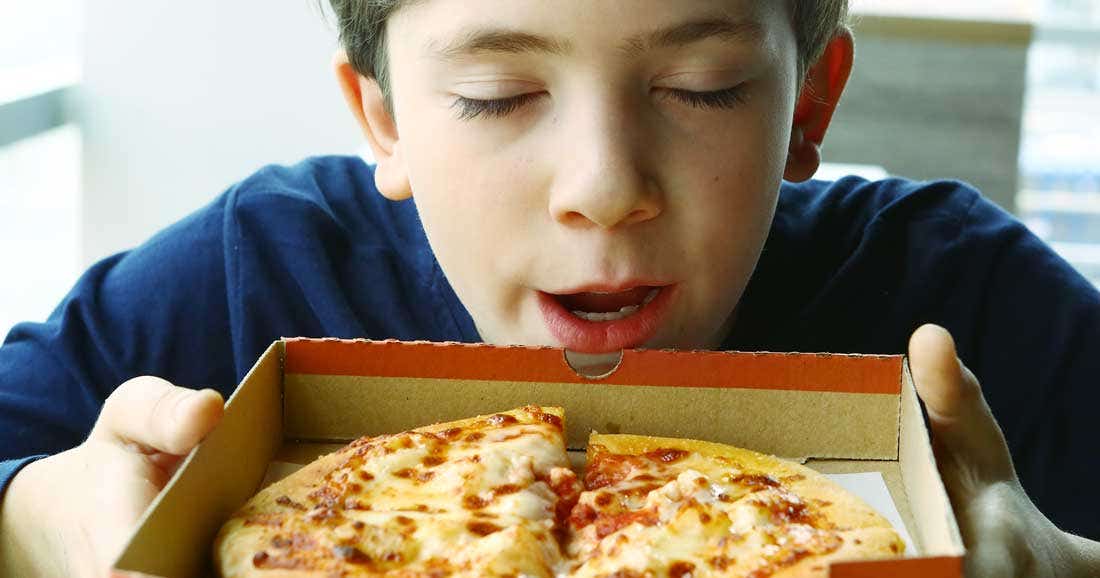Neurological study reveals how the brain interprets smells and sounds
Discover how multisensory integration in the brain enhances maternal behavior, revealing new insights into sensory processing and emotional responses.

Learn how the brain combines smell and sound to drive maternal behavior, offering new insights into sensory processing and its implications for humans. (CREDIT: CC BY-SA 4.0)
Animals, including humans, rely on multiple senses to navigate their environments and make decisions. This integration of sensory information is particularly evident during social interactions, where cues from sight, sound, smell, and touch often converge.
Yet, the neural mechanisms that process these multisensory signals remain poorly understood. Recent research, published in the journal, Current Biology, involving maternal behavior in mice sheds light on how sensory inputs are merged in the brain to drive complex actions.
Mother mice, or even virgin females exposed to pups, exhibit a behavior called pup retrieval. When pups emit ultrasonic vocalizations (USVs) signaling distress, their caregivers locate and bring them back to the nest.
This behavior demonstrates the remarkable ability of the brain to integrate auditory and olfactory cues, especially as both senses are critical for successful pup retrieval. Disrupting either the ability to hear or to smell significantly hampers this process.
Inexperienced female mice initially struggle with pup retrieval but improve with exposure to pups. This improvement is independent of pregnancy hormones, showing that sensory experience alone can motivate this maternal behavior. For virgin females co-housed with a mother and her litter, the brain undergoes changes enabling them to respond to pup cues effectively.
This learning underscores the adaptability of the auditory cortex (AC), a brain region pivotal in detecting pup calls. However, the mechanisms connecting olfactory and auditory signals in the brain remained elusive until recently.
Researchers uncovered a neural circuit connecting the basal amygdala (BA) to the auditory cortex. The BA, a region known for processing social and emotional signals, relays olfactory information to the AC. This pathway helps merge smell and sound, enhancing the brain’s ability to respond to pup calls.
Using advanced imaging techniques and optogenetics, the research team demonstrated that neurons in the BA are activated by pup odors. These neurons then influence auditory responses, enabling caregivers to detect and locate distressed pups more efficiently.
To test this circuit, researchers employed a method called fiber photometry in both anesthetized and freely moving mice. They observed that BA neurons responding to odors were particularly active during the search for pups. This activity ceased when pups were retrieved.
Further experiments revealed that stimulating BA neurons in virgin females modulated their auditory responses to USVs. Notably, this modulation shifted from suppressive to excitatory after maternal experience, reflecting how sensory experiences shape neural pathways.
Related Stories
The discovery of this pathway challenges traditional views of sensory processing. Unlike the conventional understanding that sensory signals remain distinct in their respective brain regions, the BA-AC connection exemplifies a direct integration of emotional and sensory inputs. This integration is a cornerstone for behaviors like pup retrieval, which rely on accurate and efficient responses to environmental cues.
Olfactory signals are indispensable for maternal care. When researchers chemically ablated the olfactory epithelium in surrogate females, these mice lost their ability to retrieve pups effectively. Before the procedure, the surrogates had shown a significant reduction in the time taken to retrieve pups after cohabitation with a mother and her litter. Post-ablation, their performance regressed, resembling that of naive mice.
Quantitatively, surrogates retrieved 100% of pups on day five of cohabitation, but this dropped to just 13% after their sense of smell was impaired. This stark contrast highlights the essential role of olfactory cues in coordinating maternal behavior. These findings align with earlier studies showing that blocking olfactory input disrupts maternal care in mother mice.
This dependency on olfaction illustrates how multisensory integration is critical for behavior. The BA-AC pathway integrates olfactory and auditory signals, ensuring efficient pup retrieval. Without this integration, key social behaviors break down, emphasizing the importance of sensory collaboration in the brain.
Furthermore, the research revealed that maternal behavior involves not only the detection of cues but also a complex process of assigning meaning to these cues. For instance, the ability to distinguish between pup cries and irrelevant noises depends on the integration of smell and sound in the BA-AC pathway. This selective attention ensures that mothers or surrogates prioritize essential signals over extraneous ones.
The discoveries about the BA-AC pathway in mice offer insights into how human brains process sensory information. According to Stephen Shea, a professor at Cold Spring Harbor Laboratory, “When we experience the world and interact with people, we use all our senses. That’s true for animals and humans.”
Understanding these processes can illuminate challenges faced by individuals with developmental disorders, such as autism, where sensory integration may be impaired.
Shea’s team observed that the BA not only processes emotional and social signals but also directly modulates sensory perception. This interaction may provide a framework for understanding how disruptions in sensory processing contribute to conditions like autism. For instance, difficulties in interpreting social cues—a hallmark of autism—could stem from impaired communication between regions like the BA and AC.
“The idea that we found a neural circuit that may allow emotional processes to directly interact with perception is very exciting to me,” Shea said. His research could pave the way for therapeutic approaches targeting these neural pathways, offering hope for improved social and sensory function in affected individuals.
The study also reveals how sensory processing adapts to experience. Just as surrogate mice learned to retrieve pups through exposure, humans may similarly refine their sensory integration abilities through practice and experience. This adaptability underscores the brain’s remarkable plasticity, a feature that could be harnessed for interventions in sensory processing disorders.
The implications of this research extend beyond autism. Conditions such as neurodegenerative diseases, where sensory processing often deteriorates, may also benefit from a deeper understanding of multisensory integration. For example, therapies designed to strengthen connections between brain regions could enhance sensory perception and improve quality of life for patients.
The research on mice demonstrates that multisensory integration involves more than just primary sensory areas. The direct connection between the BA and AC highlights the amygdala’s role in shaping sensory representations. Unlike traditional pathways where sensory signals are processed in isolation, the BA-AC circuit integrates emotional and sensory inputs to guide behavior.
This finding challenges conventional models of sensory processing, suggesting that emotional and social contexts significantly influence how sensory information is perceived and acted upon. The ability of the brain to combine different types of sensory data is essential for navigating complex social environments, whether for a mouse retrieving pups or a human engaging in conversation.
As researchers delve deeper into these neural circuits, they may uncover parallels between animal and human brain function. Such insights could inform treatments for sensory and emotional processing disorders, offering new ways to enhance quality of life for those affected. By understanding how the brain integrates sensory inputs, scientists are unlocking the secrets of perception and behavior, one neural connection at a time.
Moreover, these findings underscore the importance of studying behavior in naturalistic settings. Traditional laboratory experiments often isolate single sensory modalities, missing the intricate ways in which the brain combines signals.
By exploring how animals respond to real-world challenges, such as pup retrieval, researchers can gain a more comprehensive understanding of brain function. This approach not only advances basic science but also holds promise for developing more effective interventions for sensory and emotional disorders.
In the future, studies on multisensory integration may also reveal how the brain prioritizes certain signals over others. For instance, understanding why certain cues, like pup cries, take precedence over background noise could shed light on attention mechanisms. These discoveries could inform the design of technologies that enhance sensory processing, such as hearing aids that better filter relevant sounds from ambient noise.
Ultimately, the study of multisensory integration bridges the gap between basic neuroscience and practical applications. By unraveling the complex networks that underlie perception and behavior, scientists are paving the way for innovations that improve both human health and our understanding of the natural world.
Note: Materials provided above by The Brighter Side of News. Content may be edited for style and length.
Like these kind of feel good stories? Get The Brighter Side of News' newsletter.
Joshua Shavit
Science & Technology Writer | AI and Robotics Reporter
Joshua Shavit is a Los Angeles-based science and technology writer with a passion for exploring the breakthroughs shaping the future. As a contributor to The Brighter Side of News, he focuses on positive and transformative advancements in AI, technology, physics, engineering, robotics and space science. Joshua is currently working towards a Bachelor of Science in Business Administration at the University of California, Berkeley. He combines his academic background with a talent for storytelling, making complex scientific discoveries engaging and accessible. His work highlights the innovators behind the ideas, bringing readers closer to the people driving progress.



